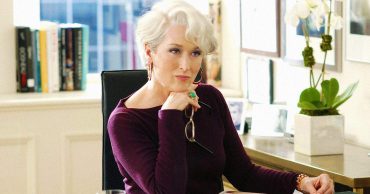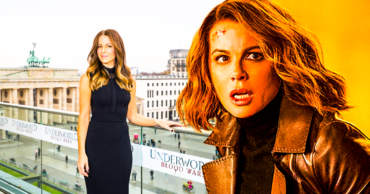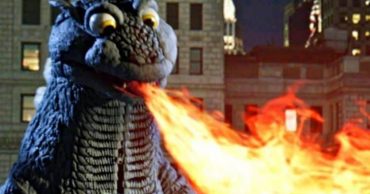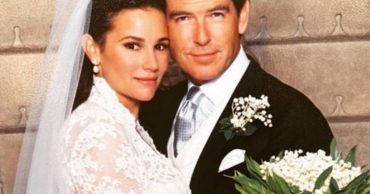
Back in 1985, there wasn’t much excitement when it came to Walt Disney Feature Animation. Moviegoers were not always wondering what the company was cooking up out in Burbank, California, and this is likely because there wasn’t a tried and true Disney animated hit since The Jungle Book way back in 1967. After Walt’s death in 1966, the animation division went into a free fall, and constant in-fighting and bickering on source material for adaptations and animation styles led to one forgettable flop after the next. From a nostalgic, cult standpoint, the Disney Dark Age (1970-1988) is interesting and underrated, but at the time, the interest just wasn’t there. The Little Mermaid changed all of this in 1989, but before the Disney Renaissance kicked off, there was a Dark Age movie that had become nearly infamous–The Black Cauldron. In the 37 years since its release, this songless, medieval fantasy-Esque cartoon has intrigued audiences more for its dark undertones and troubled production schedule than its story and any endearing qualities. This is what makes the film a certified cult classic. In this review and retrospective, we will explore what makes this underrated Disney animated film a cult classic, and why it deserves a second look after years of being swept under the rug.
The Black Cauldron and Disney’s Dark Age
The Black Cauldron is actually a mixture of stories taken from American author Lloyd Alexander’s The Chronicles of Prydain series. Released as a series of five books in the late-1960s, the books were inspired by Welsh mythology, and combined swords, sorcery, and magic in a medieval-inspired setting. The Walt Disney Company optioned the rights to all five books in 1971 and worked to develop a concise screenplay incorporating elements from all books into one film, The Black Cauldron. Expectations were high with the company, and the production budget was expanded accordingly since the animators and developers wanted the film to become the company’s most ambitious and successful project since Snow White and the Seven Dwarfs (1937). It may be surprising to discover that the company was banking on this film, especially considering its eventual creation and release and the resulting disappointment, but it’s part of this perfectionism and inability to realistically animate such a grand epic that plagued the film from the start. Work on Robin Hood (1973), The Many Adventures of Winnie the Pooh (1977), The Rescuers (1977), and The Fox and the Hound (1981) were all given the green light for expedited completion, while work on The Black Cauldron was consistently delayed and pushed back. This was actually an emerging trend for Disney animation in that era, as each of these films would all later be collected and classed as part of Disney’s Dark Age for animation. Called such due to the sense of whimsy, adoring animation, and sense of family fun being diminished in the company’s output all the way up until the release of The Little Mermaid (1989). But in many ways, The Black Cauldron is the epic of this era, even though I would argue it is certainly better than any of the company’s 1970s movies.
Troubled Production History
Some may find it hard to compare the movie’s troubled production history to what made the film infamous, but it certainly did add to the confusing tone and quality of the film when compared to other Disney animated films. From 1973-1980, the animation department simply could not decide on the type of film they wanted to make. When production did finally begin in 1980, the film went through a long-on ridiculous slate of animators that only signaled that the company truly had no idea how to approach the film. Some executives wanted songs and dances and revelry in the film, while others wanted to take a more bold approach and create a full-on animated fantasy epic. The end result seems to be a mixture of the two, or more like a complete representation of a production team that could never agree and edited together a film that lacks a central tone and focus. Disney execs were adamant that they wanted to make an animated film that combined the medieval luster and mystique of The Lord of the Rings, with the rip-roaring adventure elements of something like Star Wars. Major movie studios were not concerned with being too vague in that era, and when you have such a mismatched conglomeration of talents comprising animators and storytellers, without a central focus, things will certainly go awry. And they did.
Tim Burton was actually hired at one point to help animate the film, and this was long before he established himself as a successful filmmaker. He was subsequently fired when he went with the suggestion from executives asking for bold and unique drawings–I guess he proved to be a bit too bold. This of course robbed us all of what likely would have been a unique and fresh take on tired and family-oriented Disney animation. But the film would prove to be a dark entry in the company’s canon, and the lack of a central goal for the film is to thank for that. The main problem that affected the film was primarily the lack of focus that had taken over the feature animation division since the passing of Walt Disney in 1966. This lack of focus, and lack of a strong and dedicated director of the acquired products, severely hurt the company in the 1970s, and the 1980s. It took a very long time for Disney Animation to rebound after Walt’s passing, and since The Black Cauldron was considered the jewel in their 70s and 80s acquisitions, the film was doomed to suffer from this mismanagement. Disney’s 70s and 80s output in animation lacked the special, magical quality of what Disney was able to establish during all the years of his leadership. The Dark Age movies were either too serious and dour, or too quirky and comedic–that special something was gone. Even though The Black Cauldron is a unique film, its uniqueness comes from its boundary-pushing aesthetic in terms of being a Walt Disney animated film–certainly not in its storytelling.
Much of this can also be attributed to the lack of contribution from Disney’s original slate of animators, known as the “9 Old Men.” When The Black Cauldron finally entered into full-scale production in the early 1980s, a new slate of animators were popular in filmmaking. Animators that were not afraid to be bold and imaginative or to take risks along the lines of Ralph Bakshi or what Japan was achieving with Anime at this time. Yesterworld Entertainment’s brilliant documentary on the film does a great job of explaining exactly what went wrong during the film’s production.
Disney Animation Goes Dark
In addition to Tim Burton, The Black Cauldron is also notable as having the talents of animator and filmmaker Don Bluth attached to its early production development. Bluth would also leave work on the film to explore his other, more darker animated projects, of which The Secret of NIMH (1982) was an early result. But after Burton and Bluth’s departure, and perhaps leading from their inspiration, although they received no credit, the film’s animation and storytelling would coalesce into a dark, more mature animation aesthetic for the company. Before Jeffrey Katzenberg arrived at Disney in the fall of 1984, the film’s team of animators threw caution to the wind, in what was certainly a first for the company. Disney animated features had always been known for their kid-friendly approach to animated storytelling, but the team working on The Black Cauldron decided that they would seek to harness the teenage market for this film, and the animation took a dark turn. Scenes of blood-letting, frightening imagery related to an army of the dead, and some odd sexually suggestive animation of the three witches, were all created and later edited into what would become the final print of the film. For the first time, computer generated imagery (CGI) would also be used in a Disney animated film. Katzenberg came to Disney Animation with a goal to recreate some of the magic that existed during the era of Walt Disney’s stewardship of the department. The story goes that once he finished watching the final cut of the film in early-1985, he demanded several cuts to the film to tone down its darker content. Many of the cuts he had removed from the film, as some have theorized, quite possibly could have garnered the film a PG-13 rating–a first for Disney Feature Animation. Censorship is always wrong and certainly a drag, but the film likely would have bombed even more had Katzenberg not made these cuts. Perhaps it wouldn’t have though–we will certainly never know. The final print of The Black Cauldron did make history in this regard as it was the first Disney animated film to receive a PG rating by the MPAA. It is still a dark film only if you compare it to what came before it in the Disney animated canon. Some of the imagery is macabre, and the Horned King is truly the most terrifying villain the company ever created. But it would be fascinating to see what the film would have been before Katzenberg took his scissors to it.
What Makes The Black Cauldron Great?
The Black Cauldron is not a great film…it’s a good film and tells a decent sword and sorcery tale at a time when swords and sorcery was a popular niche in storytelling and filmmaking, and with the release of NES’ The Legend of Zelda in 1986, video gaming as well. What makes people love this movie to this day is truly its cult status and the mythic stories surrounding the film for so long when Disney banished it from public view. Even with recent talk of a live-action remake, there has never been any real and viable large reappraisal or rediscovery of the film. You can watch it on Disney+, or buy it on DVD or Blu-Ray, but nothing more surrounds the film in terms of a coveted fandom. Upon its release during the summer of 1985, the film bombed spectacularly. It grossed $21.3 million against a budget of $44 million. It is not hard to figure out why Disney shelved the film, and for many years, it looked like its shelving would be permanent. At $44 million, The Black Cauldron was the most expensive animated film ever made at that time, and for an animated division that had been losing money for the better part of 20 years, its flopping at the box office nearly destroyed the feature animation division. Had it not been for The Great Mouse Detective (1986) being moderately successful the following summer, it most certainly would have.
What Makes The Black Cauldron a Cult Film?
Legacy recognition of the film was always muted, and is practically non-existent today, but fans of the film do revere it enough for it to be classified as a cult film. There was a small, quick service restaurant in Orlando’s Walt Disney World from the mid-1980s to the early-1990s known as Gurgi’s Munchies and Crunchies; it is currently The Friar’s Nook. Funnily enough, patrons of the diner at the time would frequently ask employees what movie the restaurant was referencing–nobody knew of the film. There was an attraction at Tokyo Disneyland in the mid-1980s that featured the Horned King, but it did not last long. From its release in 1985 until the summer of 1998, the film was unavailable on videocassette or DVD, despite wide demand from fans and interested collectors. It was never once shown on television either. This unavailability of the film is what helped ignite its mythical unicorn status in Disney aficionado circles. People knew it was the company’s 25th animated film, but practically nothing else. Before the age of the internet, it was easy to find people offering a bootleg VHS of the film (how they acquired this is beyond me), and warning about its graphic content–people love to embellish the truth–for thousands of dollars. And herein lies the attributes that made The Black Cauldron a cult film.live-action remake
 Follow Us
Follow Us





